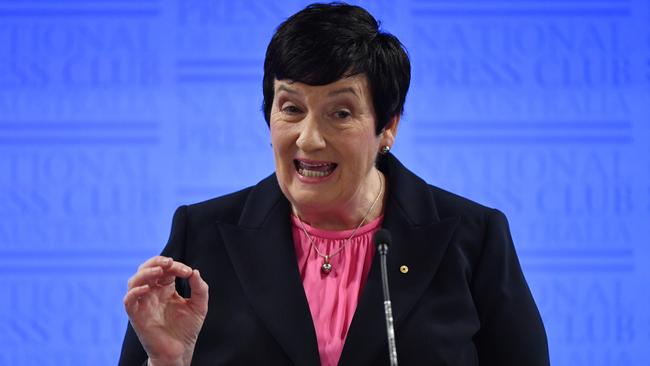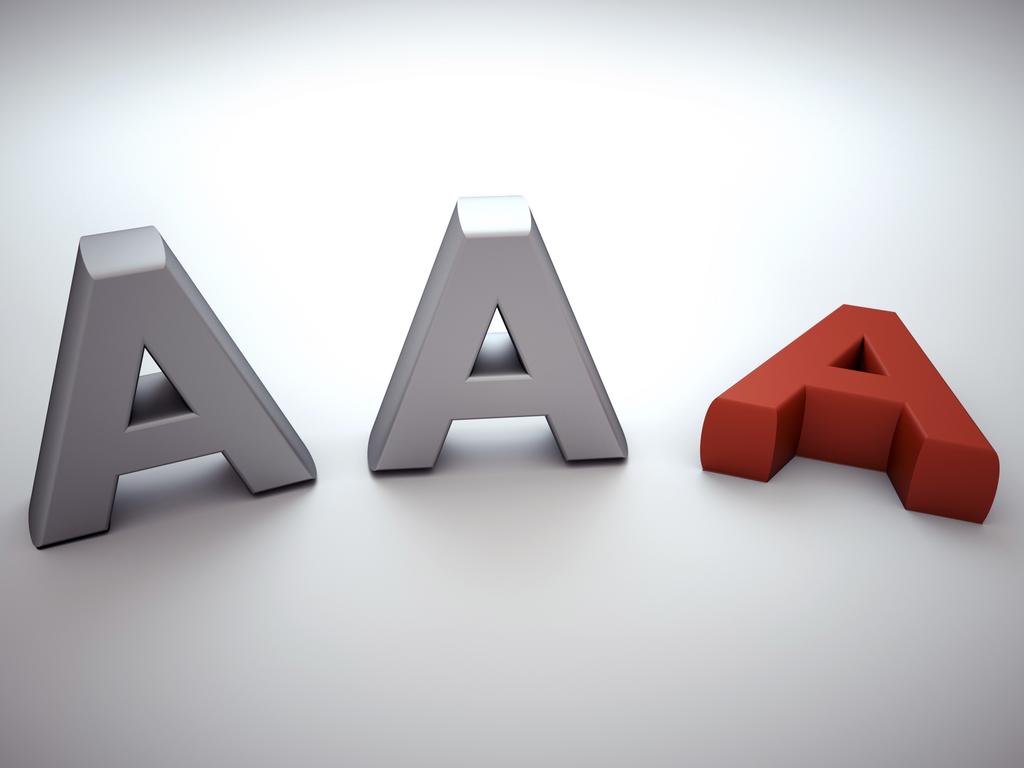Emissions debate goes from inane to ridiculous
For China, it’s a no-brainer — they get both more efficient and richer, while enabling us to destroy jobs and and impoverish ourselves.

Westacott did manage to nose Taylor out in mouthing the most mindless pap per page — she packed an impressive lot into a single page whereas his was spread out over 74 pages in his “Technology Investment Road Map Discussion Paper”.
Westacott was commenting on Taylor’s paper on behalf of the business council, the curdled cream of the Australian business community; so, true, she was essentially only developing his inanity theme.
“All Australians want action on climate change,” Westacott asserted. Actually, no, Jennifer: not all Australians are so mindlessly stupid as you claim. All Australians do not want to take utterly futile and indeed actively stupid action that would be — indeed, already is — all pain and zero gain.
She followed with a sentence that managed to fit more idiocy in so relatively few words than I would have thought possible.
“By not picking winners and remaining technology neutral, the road map is firmly focused on achieving a critical end goal, a more carbon efficient economy, while ensuring that new jobs, industries and opportunities are created to keep Australia competitive.”
“By not picking winners and remaining technology neutral”: are you kidding? The entire, albeit chaotically ramshackle, policy is exactly about picking “winners” and not remaining technology neutral.
It’s all-about closing down our existing highly efficient coal-fired power generation while eliminating any chance of it being progressively replaced by next generation coal-fired generation (or nuclear, which if properly done could be a close second best); to say nothing of destroying energy-intensive value-adding industries reliant on cheap power like aluminium smelting.
While at the same time it deliberately seeks to force-feed the use of otherwise useless wind and solar generation, backed up by some form of inefficient and almost as useless “battery”, whether Tesla-style, “big battery” Snowy 2, or gas-fired stations which would spend most of their time lying highly inefficiently idle.
She was though, beautifully, utterly inadvertently and completely unknowingly right about the policy not “picking winners”; no, it is precisely about picking losers: hence my quotation marks around the word in the earlier sentence.
“A more carbon efficient economy”: out in the real world as opposed to the jargon of public sector and business bureaucrats, what the hell does that mean?
I, and I would suggest most rational persons, would want carbon to be used efficiently like any other resource in the economy, like indeed it is already in a coal-fired power station.
Crystal clear
One thing is crystal clear, whether or not we get Westacott’s “carbon efficient economy” fantasy unicorn, we will most certainly get a dramatically and permanently less efficient economy in the good, old-fashioned — both normal English and economic — meanings of the word, if we persist in this mad, bad and dangerous embrace of destroying our energy infrastructure.
“Ensuring that new jobs, industries and opportunities are created to keep Australia competitive”; again, are you kidding?
The entire basis of our economy, of any economy — indeed of the entire progress of civilisation through especially the past two to three centuries — and so to “jobs, industries and opportunities” is access to power that is cheap, power that is reliable and power that is plentiful.
Westacott showed she well less than half got that and well more than half didn’t, with her metric of: “affordable, reliable and secure”. No plentiful, affordable not cheap, and there is no way, no way, the energy generation chaos that would ensue from the Taylor-Westacott future would deliver reliable and secure.
Our friends — for some, “friends” — in the Middle Kingdom know all this only too well. That is why China is embracing more and more, and more efficient, coal-fired power and happily selling us wind turbines and solar panels.
For them, it’s a no-brainer two-fer — they get both more efficient and richer, while enabling us to destroy jobs and industry and impoverish ourselves.
I could go on with virtually every paragraph of the Westacott statement.
The so-called “Climate Solutions Fund” has to be expanded. Why? This is all supposed to be the most efficient, the cheapest, the form of generation that will, well, generate the greatest returns.
Technology-focused strategies
Why then does it need government money? On top of the quite literally tens of billions of dollars of both taxpayer and electricity consumer money that has been pumped into useless wind and solar (and now the Snowy 2 big battery, Malcolm Turnbull’s “answer” to Kevin Rudd’s multi-billion-dollar NBN waster)?
“Other technology-focused strategies including on hydrogen, electric vehicles and grid reliability …”
Again, why? We are continually told that all these wonderful things are the cheapest and most efficient; the very future available to unfold before our eyes; so why then do investors need to be led to and then subsidised into them?
And I just love that term “grid reliability”. That’s the money you have to spend to ensure we do actually get electricity when the wind don’t blow and the sun don’t shine; with those quirky buggers, wind and sun, choosing to (not) do so when they decide rather than when it would suit us.
Like what happened in Britain earlier this month. At times Britain can get more than 10,000MW from wind when the wind does, you know, blow. For two whole days it didn’t; for two whole days Britain was getting just 300MW or so from wind — effectively zero.
So where did it get its electricity from? About 45 per cent came from a carbon-emitting, cough, cough, fossil fuel called gas; around 25 per cent from, cough, cough, nuclear; another 10 per cent or so from burning wood and pumping CO2, and 15 per cent from the extension cords to Europe.
Please Jennifer, who will we plug our extension cord into, when we’ve closed the coal-fired generators?








I give it to Business Council of Australia CEO Jennifer Westacott over Angus Taylor, the Minister for “Energy and Emissions Reduction” — four words, by the by, that capture everything that is so hopelessly and destructively wrong about government in general in the 21st century and this Morrison government more and very specifically.